Lab-grown diamonds, streamlined payments, and 3D scanning to design diamond cuts are among the innovations helping to bring the Israel diamond industry back to better days.
A long-time global center for polishing and cutting diamonds, the local diamond industry took a hit during the pandemic. But now, thanks to resilience, new trading partners, and a shot of out-of-the-box solutions, polished and rough diamond exports are increasing.
“[The year] 2020 was hideous [for diamonds],” Ophir Gore, Diamond Controller and Director of the Diamond, Gemstones and Jewelry Administration at the Ministry of Economy and Industry, tells NoCamels. “However, 2021 was not only higher than 2020 but also higher than 2019.”
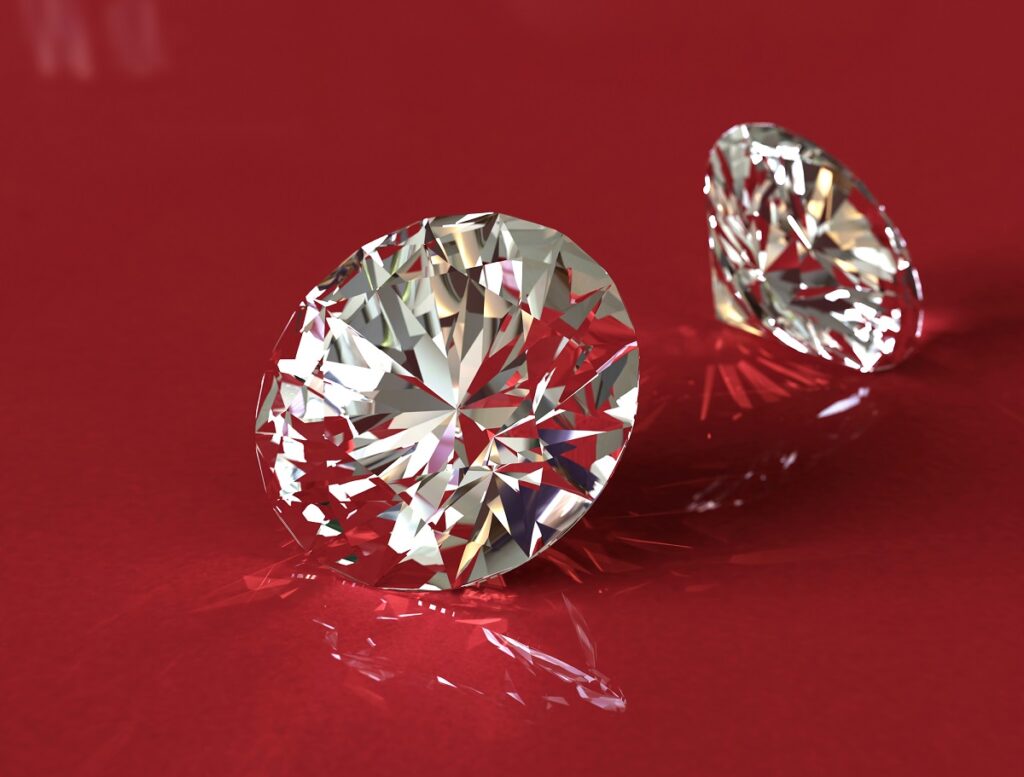
We’re putting Israel “back on the diamond map,” Daniel Kahn, VP of Business Development at Lusix, a prime grower of lab grown diamonds, tells NoCamels.
Lusix, based in Rehovot, is part of the growing trend of companies growing diamonds in a lab. While mined diamond production still trumps the lab-grown industry, the sector is growing and six to seven million carats of jewelry-grade rough diamonds from labs were produced in 2020, according to a report by business strategy and research consultancy Bain & Co.
“We fill our chamber with rich carbon gasses and heat [it] up to about 3,000 degrees, almost the temperature of the surface of the sun,” says Kahn, of the process that enables production of a lab grown diamond to be “optically, chemically, physically and structurally identical to a mined diamond.”
A growing number of global lab grown diamond companies are changing the diamond industry to be more sustainable, transparent and eco-friendly.
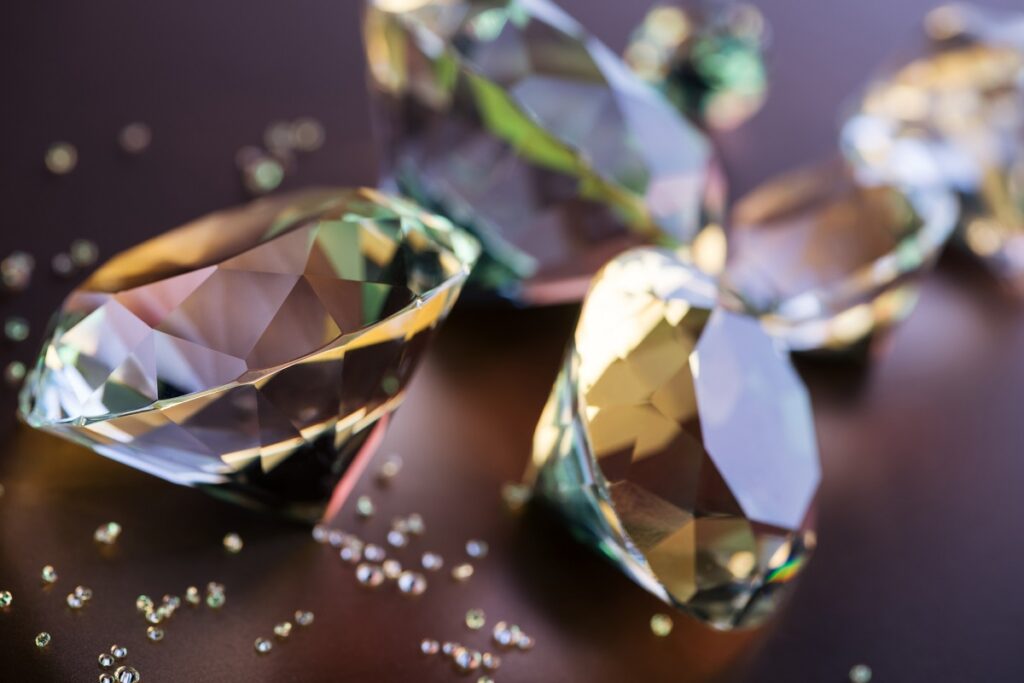
“We believe consumers today want to know the origin of the products they purchase, the impact those products have on the environment and community, and to have confidence in the claims made by their producers,” Benny Landa, Chairman of the Landa Group and Lusix founder, said in a press statement following a 2021 announcement that Lusix’s rough diamonds had been certified under the SCS 007 Sustainability Rated Diamond Standard as sustainability-rated diamonds.
According to reports, younger consumers are still keen on purchasing diamonds but sustainability is also a top priority in their jewelry purchases.
“A three-carat diamond can cost tens of thousands of dollars. But a lab-grown diamond will cost $10,000-15,000,” Khan tells NoCamels. And “no one would know the difference because there is no difference.”
Lusix, the Israeli contender in this lab-grown space, raised $45 million from Ragnar and More Investment House in February to build a new factory in Modi’in to continue its goal of bringing sustainability-rated diamonds to market.
The sustainability agenda of the diamond industry also reaches to new sales platforms, in which e-commerce adoption has become a requirement.
Like other sectors in which Israeli dreamers, entrepreneurs, and innovators have made an impact, “the diamond industry is jumping the curve right now,” Zeev Maimon, CEO of Mazalit, says of the country’s diamond industry.

In the diamond industry, traders buy and sell based on two measures: trust and cash.
No merchant wants to pay $100,000 only to receive an “empty box,” says Maimon, CEO of Mazalit, a dedicated financial platform for the diamond industry. And diamond merchants cannot afford credit card fees, which on a $100,000 sale, could equal $3,000.
So, the diamond industry’s need for innovation to align and streamline payments is critical.
Mazalit is a website that evaluates the price of diamonds automatically and makes it easy for merchants to receive financing, says Maimon, a former diamond dealer.
“You put in the gemological parameters [like you would do for] a car,” Maimon tells NoCamels, and the company’s technology will unveil in seconds the estimated loan amount merchants can receive on their diamonds. In short, Mazalit describes itself as both the financier and the technology for diamond loans. And the company hopes to take the place of other more traditional lenders that have left the diamond sector because of perceived risks and the recent downturn in the industry’s dealings.
Billions of dollars in diamonds often sit in a safe “collecting interest and dust,” says Maimon, so traders need cash flow to conduct business.
Maimon says he plans to expand Mazalit’s technology to B2B payments for diamond dealers. The payment system will ensure the proper exchange of cash for diamonds between merchants.
“I think crypto is probably part of our future,” Maimon tells NoCamels. Crypto provides “a traceability of diamonds: where they’re coming from and who owns them. Crypto will also “stave off credit card fees,” he says, and ensure final sales.
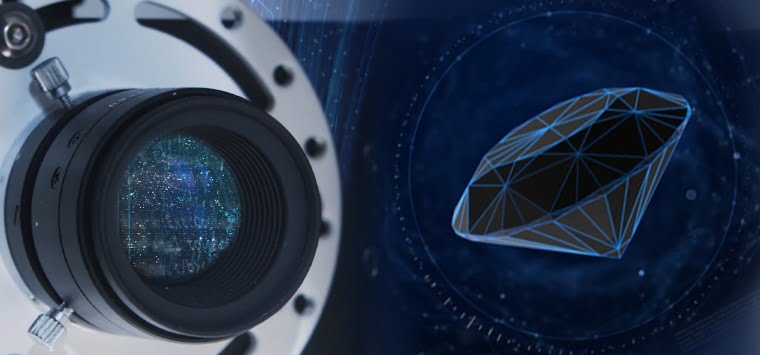
The innovation doesn’t stop at the bank.
Another area in which Israelis are innovating is diamond scanning. Sarine Technologies, a public company, helps both manufacturers and retailers automate diamond operations.
Before Sarine, manufacturers “planned cuts manually” and retailers “sent diamonds to a grading lab” for inspection, David Block, CEO of Sarine Technologies, tells NoCamels from his green, vivacious garden in Ben Shemen, Israel.
Manufacturers use Sarine’s 3D scanning to design diamond cuts, and retailers, like luxury brand Boucher, use Sarine to grade and trace diamonds.
Block says Sarine’s planning and scanning technologies are like an “architect that’s going to determine how the house looks and how the design [will be] unique” (by “house”, he means the diamond — N.M).
“The future has to do with technology,” Block tells NoCamels. “If you’re not digital, you don’t exist.”
Sarine works with a number of innovative technologies to get the most out of diamonds.
The Sarine Technology Lab is said to have the first lab to provide automated 4Cs (cut clarity, color, carat) grading, based on advanced technologies, driven by artificial intelligence, enabling objective and reliable diamond grading that reaches levels of consistency.
Sarine also uses the Loupe, an innovative diamond imaging solution to allow buyers to view the full actual details of the diamond, in real time, as if they were holding it in their hand.
Sarine uses the Galaxy inclusion mapping technology for automated detection and mapping of the internal features of rough diamonds. Block tells NoCamels they’ve been using the technology since 2008 and that it has “really revolutionized the game.”
Sign up for our free weekly newsletter
Subscribe
“We bought a startup here in Israel that was in the proof of concept stage,” says Block, “and we took it and we commercialized the technology, which enabled us to scan internally the inclusions inside the diamond. Think about it like an MRI or an X-ray.”
He continues, “So when we took that technology and combined it with the planning technology we had the ultimate way to plan diamonds, while considering their inclusions. And that today became the industry standard for planning diamonds while considering their clarity,” he says. “How does the planning affect how much you could extract in terms of value out of the rough diamonds? It increased the value that you could extract quite dramatically.” In other words, you could view the inclusions (small imperfections inside the diamond) for yourself and decide if you wanted to include them or take them out. And you can optimize the value of the diamond – a smaller diamond could have higher clarity and thus be more valuable, for example.
A glittering history
Diamonds have been part of Israeli industry since the 1930s. Once a small hall, the Diamond Exchange complex in Ramat Gan, just minutes from Tel Aviv, includes three towers, a full trading floor, 1,000 diamond companies, and 3,200 members.
The multi-building complex, replete with a skybridge connecting the office towers, is pretty much off-limits to the public. Visitors must pass through high security, passport control, fingerprinting and bag searches, not to mention the need to be privately escorted in and out of the area at all times.
After all, this enclosed world houses billions of dollars worth of precious stones, independent banks, and jewelers at any given time.
“Forty years ago, we had thousands of people polishing, cutting, and processing rough diamonds, but most of that industry sits in India because of the low labor cost,” Gore tells NoCamels, during an interview at the Israel Diamond Exchange complex.
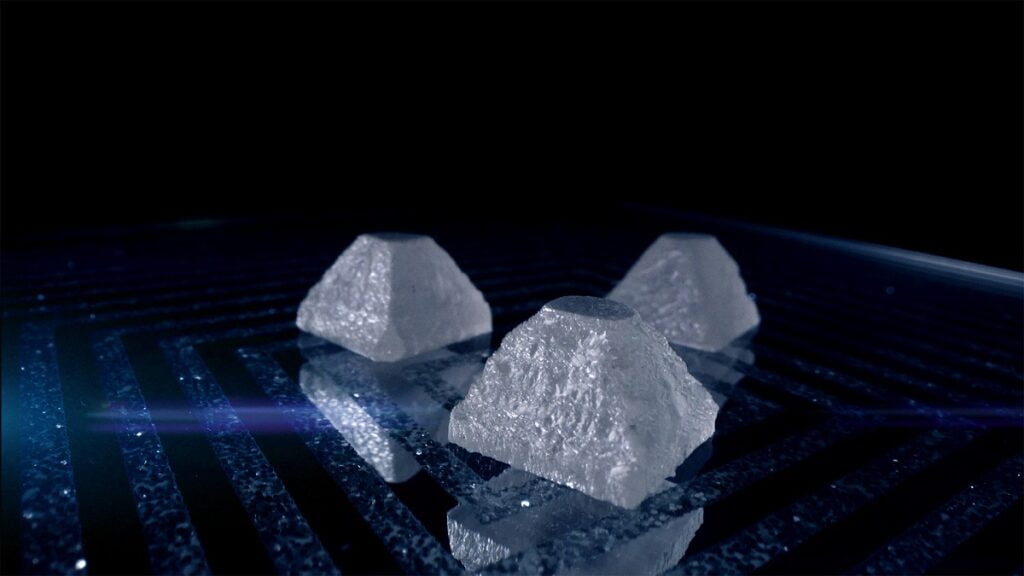
In its heyday, 40 to 50 percent of all polished diamonds in the world would pass through Tel Aviv. Market reports show that Israel has a “9.25 percent share of a global market worth $116 billion a year.”
In 1977, the value of Israeli polished diamond exports exceeded $1 billion, and last year, it exceeded $3.6 billion, the Israel Ministry of Economy and Industry reports.
Polished and rough diamond exports increased by 54.3 percent and 109.4% respectively, from 2020 to 2021, and imports increased by 91.5% and 91.4% respectively, according to Ministry of Economy and Industry reports.
In fact, 2021 marks the first time in 10 years that the Israeli diamond industry started to show signs of growth.
“In Israel, we have a center for diamonds, but we don’t have a lot of industry,” says Gore, sitting at a large table in his office that is decked out in India memorabilia bought in the country where he once lived.
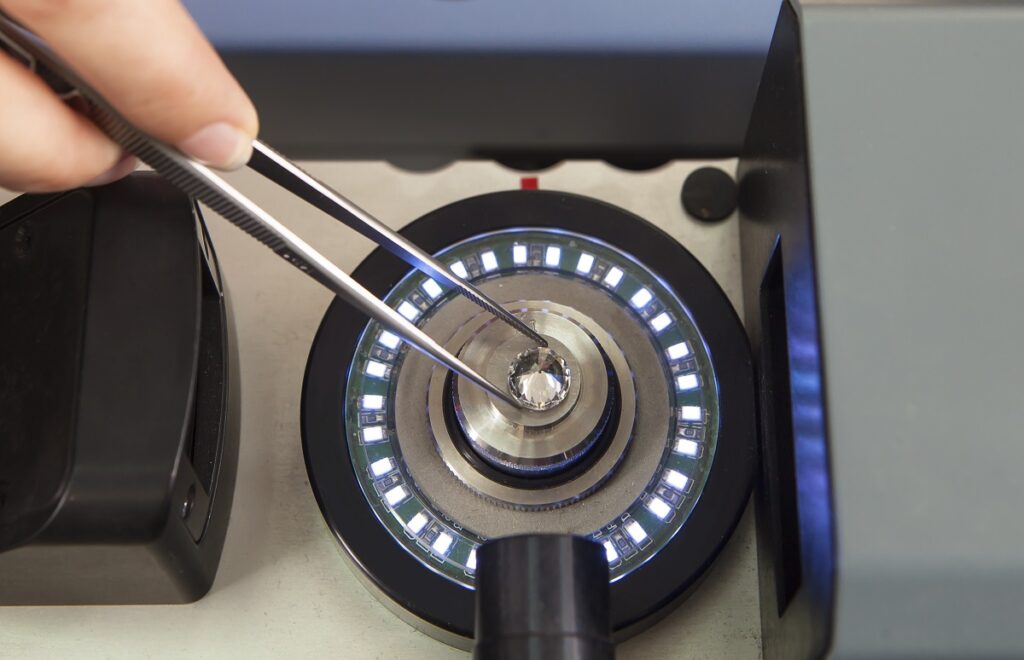
To get to his office, Gore is reminded every day of Israel’s possible diamond prowess. His office requires him to pass through the diamond trading floor, a wide open space where traders set up their tables with shiny rocks, magnifying glasses, and microscopes.
The tech innovation is creating a new future for the local diamond industry. But good trading partners are important, too.
Israel’s COVID-19 recovery steered the diamond economy back on course and the Abraham Accords pushed it forward. Signed in 2020, the Abraham Accords energized trade between the United Arab Emirates and Israel, especially in diamonds.
“The UAE wasn’t an important partner of Israel when it came to diamonds. Now the UAE is one of the most important partners of Israel,” says Gore.
SEE ALSO: Israeli Jewelers Design Custom, $1.5M Diamond-Encrusted Face Mask
Trade with the UAE grew from zero in 2019 to NIS 85.6 million in 2020, and skyrocketed to NIS 865.4 million in 2021, according to a Calcalist report. That’s a 366% increase from 2020 to 2021.
In fact, Gore says there are four main global centers for diamonds: Israel, India, the UAE, and Belgium. And Israel trades with all of them.
A sparkling future
Gore, Maimon, Block, and Khan believe 2022 will be another big year for the Israeli diamond industry.
Israel may not have any mines but its technologies and its polishing techniques continue to turn rough diamonds into the shiny, sparkling must-have gems the world desires.
“When we have the technology that you put [rough diamonds] on one side, and the other side will come out with polished diamonds, labor won’t be part of the cost of manufacturing the diamond, it will be priced into the machine,” Maimon says.
Maimon and Gore hope future manufacturing and payment technologies will spark trade and bring manufacturing back to Israel.
Lusix is also “trying to bring some of the diamond industry back to Israel.” Khan calls his company’s technology a “game-changer” that could create hundreds of jobs locally.
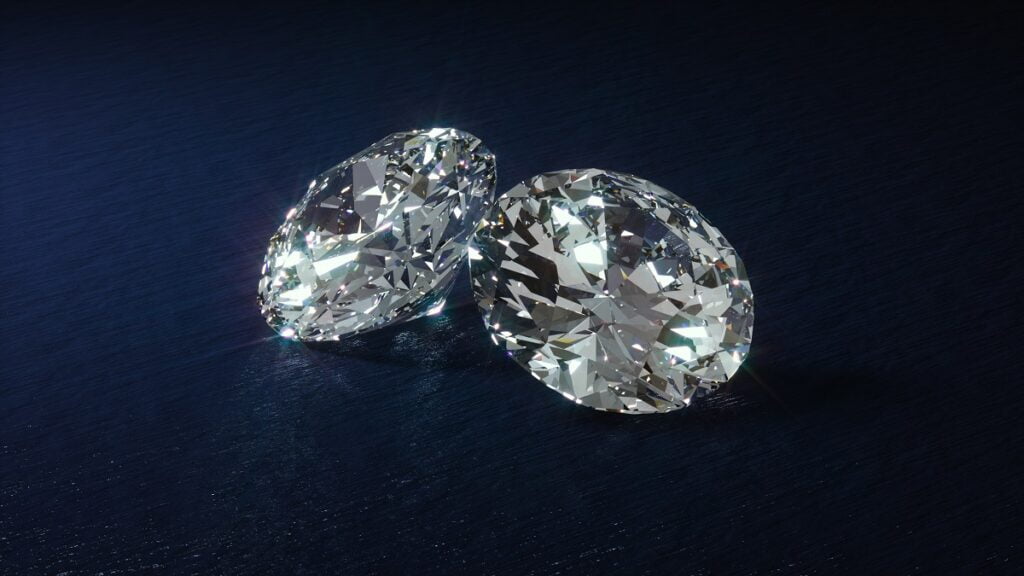
“If you’d asked me [about manufacturing technology in Israel] five or 10 years ago, I would probably say ‘yes, [it would change the game]’ but now I think it’s a bit too late,” Block tells NoCamels. Instead, he explains that Israel needs to innovate its trading technology to have an “edge that other trading centers don’t have.”
While polishing automation and lab-grown diamonds are beneficial, Block believes the true prize is streamless supply chains. “The supply chain is going to dramatically change through technology. And I would say even more than technology, you need to do it through data. Tthat’s going to be the game-changer for the diamond industry in the next five to 10 years,” Block tells NoCamels.
The diamond industry “is not based on demand, but on supply. You’ve got about two years of stock in the supply chain from the mines to the retailers, it’s very inefficient,” Block says.
In other words, imagine running a business and not being able to estimate your inventory in three months. This is what suppliers deal with, Block explains. “If you go to a retailer and ask him today, tell me in three months’ time what kind of polished goods will be available, he has no idea,” says Block.
Khan says Lusix can meet that need, too.
“A lot of people want to buy the diamonds, and we don’t have enough supply to give it to them,” says Kahn, reiterating that the new factory can increase the supply to match the demand.
Related posts

Editors’ & Readers’ Choice: 10 Favorite NoCamels Articles

Forward Facing: What Does The Future Hold For Israeli High-Tech?

Impact Innovation: Israeli Startups That Could Shape Our Future




Facebook comments